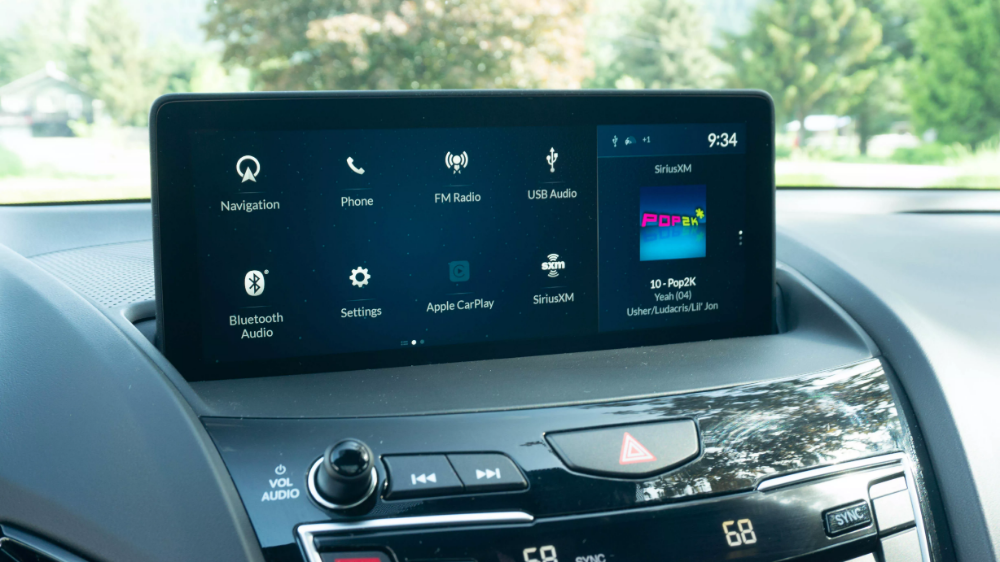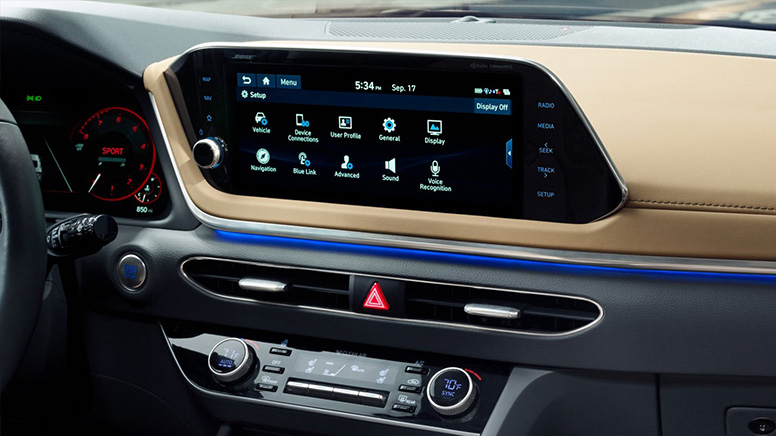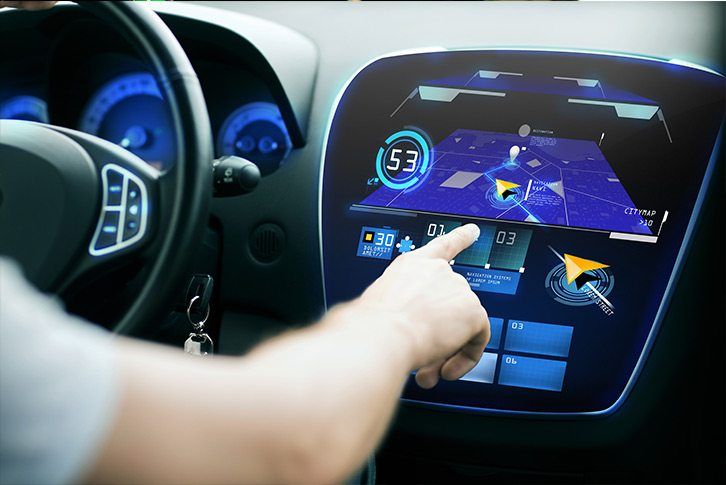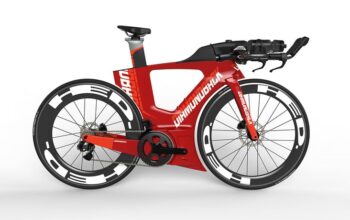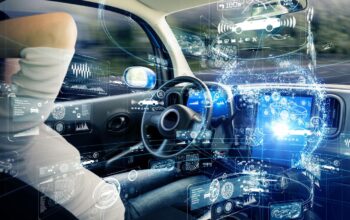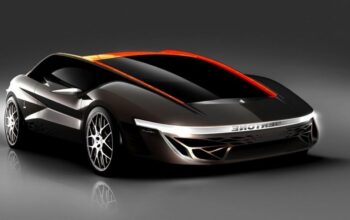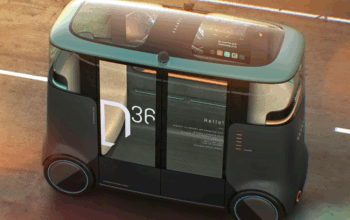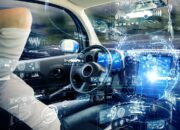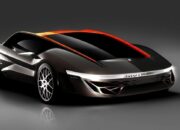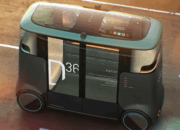The modern automobile has transcended its traditional role as a mere mode of transport. Today’s vehicles are sophisticated digital hubs, increasingly defined by their high-tech infotainment systems. These complex ecosystems of hardware and software are no longer just about playing music; they are the central nervous system of the contemporary car, integrating navigation, communication, entertainment, and crucial vehicle functions into a seamless user experience. This article delves deep into the evolution, core components, cutting-edge features, future trends, and the profound impact of advanced infotainment on driver-vehicle interaction and the overall automotive landscape.
The Infotainment Revolution: Beyond the Radio
For decades, the car’s interior was a relatively simple affair: a steering wheel, pedals, gauges, and perhaps a basic AM/FM radio. The advent of the CD player marked an early step into more diverse entertainment, followed by auxiliary inputs and then Bluetooth connectivity. However, the true infotainment revolution began with the widespread adoption of digital displays and the integration of smartphone technology.
This shift was driven by several key factors:
A. Consumer Expectations: As smartphones became ubiquitous, users grew accustomed to intuitive, touch-based interfaces and instant access to information and entertainment. They began to demand similar seamless digital experiences in their vehicles. B. Technological Advancements: Miniaturization of computing power, advancements in display technology (LED, OLED), and faster processing units made sophisticated in-car systems feasible and affordable. C. Safety and Convenience: Integrating functions like navigation, hands-free calling, and voice control into a central system aimed to reduce driver distraction while enhancing convenience. D. Competitive Differentiation: As vehicles became more similar in terms of performance and safety, infotainment emerged as a crucial battleground for automakers to differentiate their offerings and appeal to tech-savvy buyers.
The evolution has been rapid, moving from simple monochromatic screens to vibrant, multi-functional touch displays that are the focal point of the dashboard.
Core Components of Modern Infotainment Systems
A contemporary high-tech infotainment system is a complex amalgamation of various interconnected components working in harmony to deliver a rich user experience. Understanding these elements is key to appreciating their sophistication.
A. Central Processing Unit (CPU) and Graphics Processing Unit (GPU)
At the heart of every advanced infotainment system lies a powerful processor, akin to the brain of a computer or smartphone. This CPU (and often a dedicated GPU for rendering graphics) is responsible for:
- Processing User Inputs: Rapidly interpreting touch gestures, voice commands, and button presses.
- Running Applications: Executing navigation software, media players, and various vehicle-specific apps.
- Rendering Graphics: Displaying smooth animations, high-resolution maps, and visually rich interfaces on the screen.
- Managing Connectivity: Handling data flow from Wi-Fi, Bluetooth, cellular modules, and external devices.
The power of these processors directly impacts the system’s responsiveness, fluidity, and ability to handle multiple tasks simultaneously without lag.
B. Display Technologies
The screen is the primary interface through which users interact with the infotainment system. Modern systems utilize a variety of advanced display technologies:
- Touchscreens: Ranging from 7 inches to over 17 inches, these are the most common interface. They come in various types, including resistive (older, less sensitive) and capacitive (modern, smartphone-like multi-touch).
- LCD (Liquid Crystal Display): Standard for many years, offering good brightness and color reproduction.
- OLED (Organic Light-Emitting Diode): Increasingly found in premium vehicles, OLED offers superior contrast, true blacks, wider viewing angles, and more vibrant colors due to each pixel emitting its own light.
- Curved Displays: Some manufacturers are incorporating curved screens to better integrate with dashboard aesthetics and improve viewing angles.
- Haptic Feedback: Some touchscreens incorporate haptic feedback, providing a subtle vibration or click sensation when touched, mimicking physical buttons and enhancing tactile confirmation.
Beyond the central display, many vehicles now feature multiple screens, including digital instrument clusters, head-up displays (HUDs), and rear-seat entertainment screens, all often interconnected.
C. Input Methods
While touchscreens dominate, a truly advanced infotainment system offers diverse input methods to enhance safety and convenience:
- Voice Recognition: Sophisticated natural language processing allows drivers to control navigation, make calls, change music, and even adjust climate settings using conversational commands. AI advancements are making these systems increasingly accurate and intuitive.
- Physical Buttons and Dials: Despite the trend towards touchscreens, physical controls for essential functions like volume, climate, and basic menu navigation remain crucial for tactile feedback and reducing driver distraction.
- Rotary Controllers/Touchpads: Some brands offer console-mounted rotary dials or touchpads (e.g., BMW iDrive, Audi MMI, Mercedes-Benz MBUX) as an alternative or complementary input method to touchscreens, allowing for control without reaching for the screen.
- Steering Wheel Controls: Buttons on the steering wheel provide quick access to audio, phone, cruise control, and sometimes voice command activation, keeping hands on the wheel.
- Gesture Control: A nascent technology where hand movements (e.g., waving, rotating a finger) in front of sensors can control certain functions without physical touch.
D. Connectivity Modules
Modern infotainment relies heavily on robust connectivity:
- Bluetooth: For wireless audio streaming and hands-free calling from smartphones.
- Wi-Fi: Enables in-car hotspots, over-the-air (OTA) updates, and connectivity for passenger devices.
- Cellular Modem (4G/5G): Provides always-on internet connectivity for navigation services, streaming, emergency calling (e.g., eCall), and remote vehicle diagnostics.
- USB Ports: For charging devices, playing media from flash drives, and wired smartphone integration.
- NFC (Near Field Communication): Less common but used for quick pairing of devices or digital key functionalities.
E. Audio Systems
High-quality audio remains a cornerstone of the infotainment experience:
- Premium Speakers: Partnerships with renowned audio brands (e.g., Bose, Harman Kardon, Burmester, Bang & Olufsen) provide bespoke speaker setups with precise acoustic tuning for the vehicle’s interior.
- Digital Signal Processing (DSP): Advanced DSP units optimize audio output, create surround sound effects, and compensate for cabin acoustics.
- Subwoofers: Dedicated units for deep bass reproduction.
- Active Noise Cancellation: Uses microphones to detect and counteract unwanted road or engine noise, enhancing audio clarity and overall cabin quietness.
Cutting-Edge Features Redefining the Drive
The true allure of high-tech infotainment lies in the innovative features they bring to the driving experience.
A. Advanced Navigation and Mapping
Beyond basic turn-by-turn directions, modern navigation systems offer:
- Real-time Traffic Information: Dynamically rerouting based on live traffic data to avoid congestion.
- Predictive Routing: Learning driver habits and suggesting optimal routes based on historical data.
- Satellite Imagery and 3D Maps: Providing highly detailed and realistic map views.
- Augmented Reality Navigation: Overlaying navigational cues directly onto a live camera feed of the road ahead, displayed on the central screen or HUD. This technology, pioneered by Mercedes-Benz MBUX, makes following directions incredibly intuitive.
- POI (Point of Interest) Search: Comprehensive databases for finding restaurants, gas stations, parking, and other destinations, often with user reviews and ratings.
- EV-Specific Routing: For electric vehicles, navigation systems can plan routes that include charging stops, consider battery range, and even show charger availability in real-time.
B. Seamless Smartphone Integration (Apple CarPlay & Android Auto)
These platforms have revolutionized how drivers interact with their smartphones in the car. They project a tailored, car-optimized version of the phone’s interface onto the vehicle’s screen, providing access to:
- Maps: Using familiar phone-based navigation apps (Google Maps, Waze, Apple Maps).
- Music: Accessing streaming services (Spotify, Apple Music, YouTube Music) and personal libraries.
- Messaging: Reading and sending texts via voice, minimizing distraction.
- Calling: Hands-free phone calls.
- Voice Assistants: Leveraging Siri, Google Assistant, or other phone-based voice agents.
The latest iterations include wireless CarPlay and Android Auto, eliminating the need for USB cables, further enhancing convenience.
C. Over-the-Air (OTA) Updates and Personalized Profiles
OTA updates are transforming vehicle ownership, allowing manufacturers to:
- Introduce New Features: Remotely add functionalities, improve existing ones, or even unlock performance enhancements.
- Bug Fixes and Security Patches: Swiftly address software issues or vulnerabilities without a dealership visit.
- Keep Systems Current: Ensure the infotainment system remains modern and secure throughout the vehicle’s lifespan.
Personalized profiles allow multiple drivers to save their preferred settings for seat position, climate control, radio presets, navigation favorites, and even driving modes. The system can often recognize the driver via key fob or facial recognition and automatically load their profile, offering a truly bespoke experience.
D. Advanced Voice Assistants and Artificial Intelligence (AI)
Beyond simple commands, in-car voice assistants are becoming remarkably intelligent, often powered by AI and machine learning. Systems like Mercedes-Benz’s MBUX (“Hey Mercedes”) or BMW’s Intelligent Personal Assistant can:
- Understand Natural Language: Responding to conversational requests rather than rigid commands.
- Learn User Habits: Adapting to preferences over time, suggesting music or routes.
- Control Vehicle Functions: Adjusting temperature, opening windows, or even activating massage seats.
- Provide Information: Answering general knowledge questions, giving weather updates, or sports scores.
- Contextual Awareness: Understanding the context of a conversation to provide more relevant responses.
E. Digital Instrument Clusters and Head-Up Displays (HUDs)
The traditional analog gauge cluster is rapidly being replaced by fully digital displays, offering:
- Customizable Layouts: Drivers can choose what information is displayed (e.g., large map, minimalist speed display, detailed vehicle data).
- Dynamic Visuals: Animations, high-resolution graphics, and integration with navigation directions.
- Integration with Infotainment: Often mirroring content from the central screen, such as turn-by-turn directions or incoming calls.
Head-Up Displays (HUDs) project critical information (speed, navigation cues, warning lights) directly onto the windshield in the driver’s line of sight, minimizing the need for eyes to leave the road. Advanced HUDs can even incorporate augmented reality, highlighting lane markers or points of interest directly on the road ahead.
F. Multi-Screen Experiences and Rear-Seat Entertainment
Luxury and family-oriented vehicles are increasingly offering multi-screen setups:
- Passenger-Side Displays: Some vehicles include a dedicated screen for the front passenger, allowing them to control entertainment, navigation, or browse the web without distracting the driver.
- Rear-Seat Entertainment (RSE) Systems: Individual screens for rear passengers, often with their own internet connectivity, app stores, and headphone jacks, keeping occupants entertained on long journeys. Some systems allow content to be streamed from the front or to be controlled remotely.
The Impact of High-Tech Infotainment
The pervasive integration of advanced infotainment systems is having a profound impact on several aspects of the automotive world and the driving experience itself.
A. Enhanced Driver Experience and Convenience
The primary benefit is a significantly improved driver and passenger experience. Intuitive interfaces, seamless connectivity, and a wealth of information at one’s fingertips make driving more enjoyable, less stressful, and more productive. Drivers can stay connected, entertained, and informed without resorting to dangerous phone usage.
B. Influence on Vehicle Design and Ergonomics
The prominence of large screens has dramatically reshaped interior design. Dashboards are becoming cleaner, with fewer physical buttons, and are often designed to integrate the display fluidly. Ergonomics play a crucial role in placing screens within easy reach and line of sight, ensuring minimal distraction. The shift towards touch-first interfaces also influences the placement of other controls and storage solutions.
C. Data Generation and New Revenue Streams
Infotainment systems are massive data generators. They collect data on usage patterns, navigation routes, vehicle diagnostics, and more. This data, when anonymized and aggregated, can be invaluable for:
- Product Improvement: Informing future design decisions and feature development.
- Personalized Services: Offering tailored promotions or services based on driver habits.
- New Revenue Streams: Subscriptions for connected services, premium features, in-car commerce, or even targeted advertising based on location and preferences (with appropriate privacy safeguards).
D. Cybersecurity Challenges
As vehicles become more connected, they also become potential targets for cyber threats. Infotainment systems, being the primary gateway to the vehicle’s network, represent a significant cybersecurity challenge. Manufacturers must invest heavily in robust encryption, secure coding practices, regular security audits, and OTA updates to patch vulnerabilities, protecting both driver data and vehicle integrity from malicious actors.
E. Software Development and Talent Acquisition
The shift to software-defined vehicles means automakers are increasingly becoming software companies. This requires a fundamental change in organizational structure and a massive investment in software development talent. The ability to design, develop, and continuously update complex infotainment systems is now a core competency, leading to fierce competition for software engineers, UX/UI designers, and cybersecurity experts.
Future Trends in Automotive Infotainment
The pace of innovation in infotainment shows no signs of slowing down. Several exciting trends are poised to shape the next generation of in-car digital experiences.
A. Augmented Reality (AR) Everywhere
Beyond navigation, AR could become pervasive. Imagine:
- AR Windshields: Projecting not just speed and navigation, but also highlighting hazards, points of interest, or even real-time traffic flow directly onto the road ahead.
- AR for Diagnostics: Overlaying information onto vehicle components during maintenance.
- AR for Entertainment: Creating immersive experiences for passengers.
B. Seamless Integration with Smart Homes and Ecosystems
Vehicles will become an even more integrated part of a broader digital ecosystem. Drivers will be able to:
- Control Smart Home Devices: Adjust thermostats, turn on lights, or check security cameras from their car.
- Receive Deliveries: Integrate with delivery services for in-car package drop-offs.
- Connect with Wearables: Sync fitness trackers for health data or use smartwatches for vehicle access.
C. Advanced Biometrics and Health Monitoring
Future infotainment systems may incorporate biometric sensors to monitor driver alertness, stress levels, or even vital signs. This data could be used for:
- Driver Fatigue Detection: Alerting sleepy drivers or even initiating a safe stop.
- Personalized Climate/Music: Adjusting cabin environment based on mood or stress.
- Health Diagnostics: Providing basic health checks or alerting emergency services in case of a medical event.
D. Immersive Entertainment and Gaming
As autonomous driving capabilities advance, the need for driver attention will decrease, opening up possibilities for:
- High-Fidelity Streaming: Advanced 5G connectivity enabling 4K video streaming and cloud gaming.
- Integrated Gaming Consoles: Allowing passengers (and eventually drivers in autonomous modes) to play console-quality games on large screens.
- Virtual Reality (VR) Experiences: Potentially providing immersive VR entertainment for passengers in fully autonomous vehicles.
E. Edge Computing and AI on the Device
While cloud connectivity is crucial, increasing processing power on the vehicle itself (edge computing) will enable:
- Faster AI Processing: Quicker responses from voice assistants and predictive features without constant cloud reliance.
- Enhanced Privacy: More data processed locally, reducing the need to send sensitive information to the cloud.
- Offline Functionality: Maintaining core infotainment functions even in areas with poor cellular coverage.
F. Subscription-Based Features and Personalization
The trend of offering features on a subscription basis is likely to expand. This allows manufacturers to:
- Offer Flexible Ownership: Users can subscribe to features they need only when they need them (e.g., enhanced navigation for a road trip).
- Generate Recurring Revenue: Creating a stable income stream beyond initial vehicle sales.
- Personalized Upgrades: Offering performance boosts, advanced driver assistance features, or specific entertainment packages for a monthly fee.
Conclusion
High-tech infotainment systems have rapidly evolved from simple car radios to the intelligent, interconnected heart of the modern vehicle. They are no longer just an add-on but a fundamental expectation, profoundly influencing purchasing decisions, vehicle design, and the entire automotive ecosystem. By seamlessly blending connectivity, entertainment, information, and control, these systems transform the act of driving into a more engaging, convenient, and safe experience.
As technology continues its relentless march forward, the capabilities of in-car infotainment will only expand. The integration of advanced AI, augmented reality, biometric monitoring, and seamless connectivity with broader digital lifestyles promises a future where the vehicle’s cockpit is an even more immersive, personalized, and integral part of our daily lives. Automakers that excel in delivering intuitive, robust, and constantly evolving infotainment experiences will undoubtedly be the ones that dominate the competitive landscape, ensuring that the journey itself is as enriching as the destination. The digital cockpit is not just explored; it is driving the future of personal mobility.

